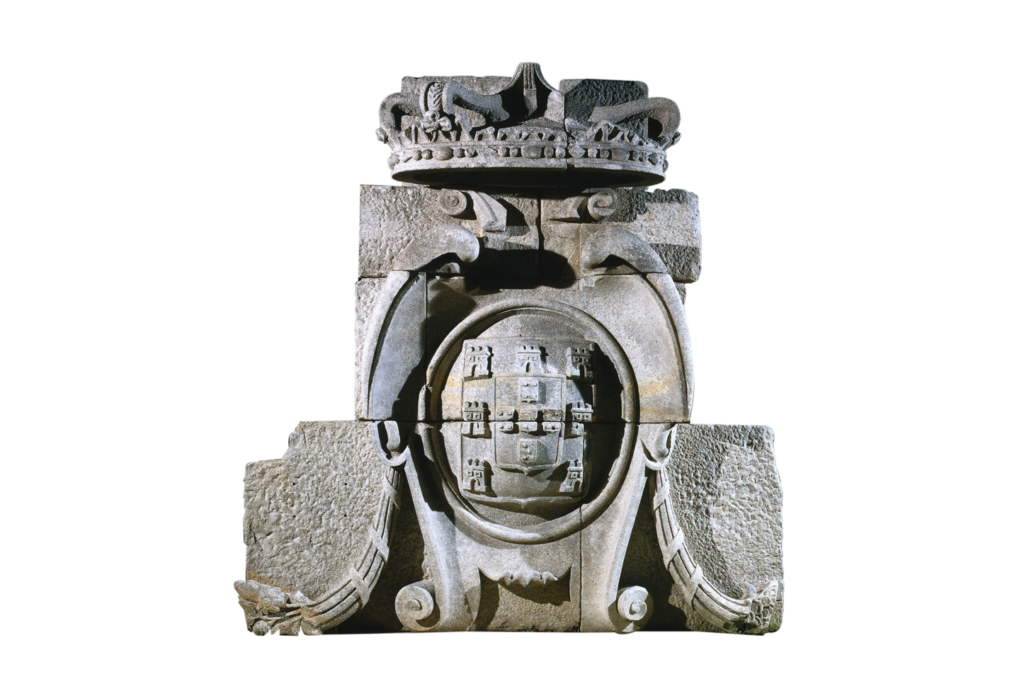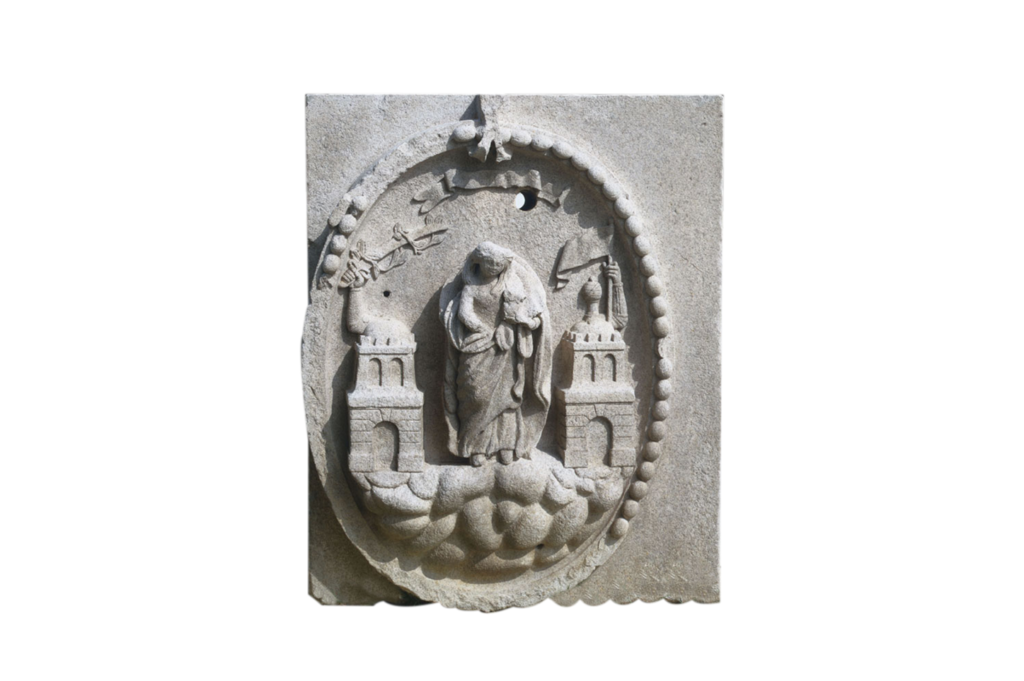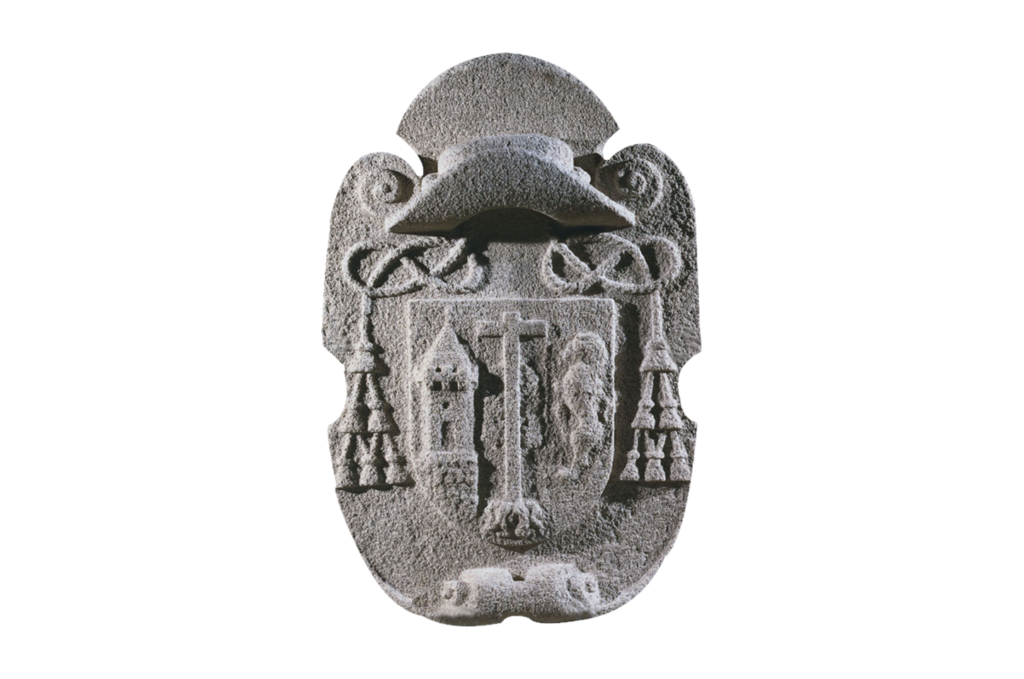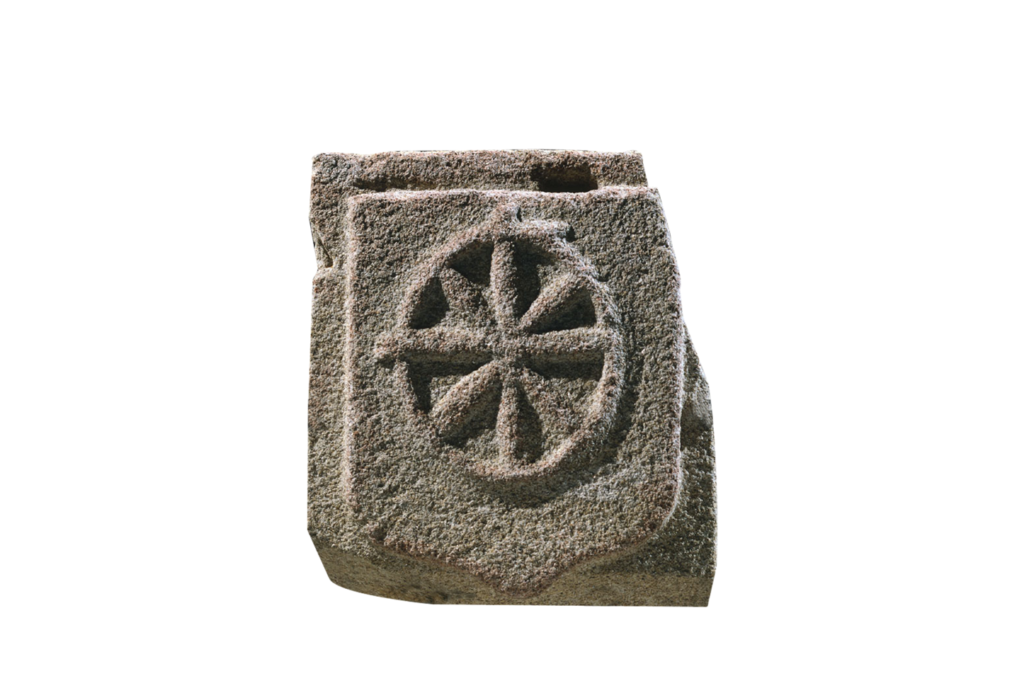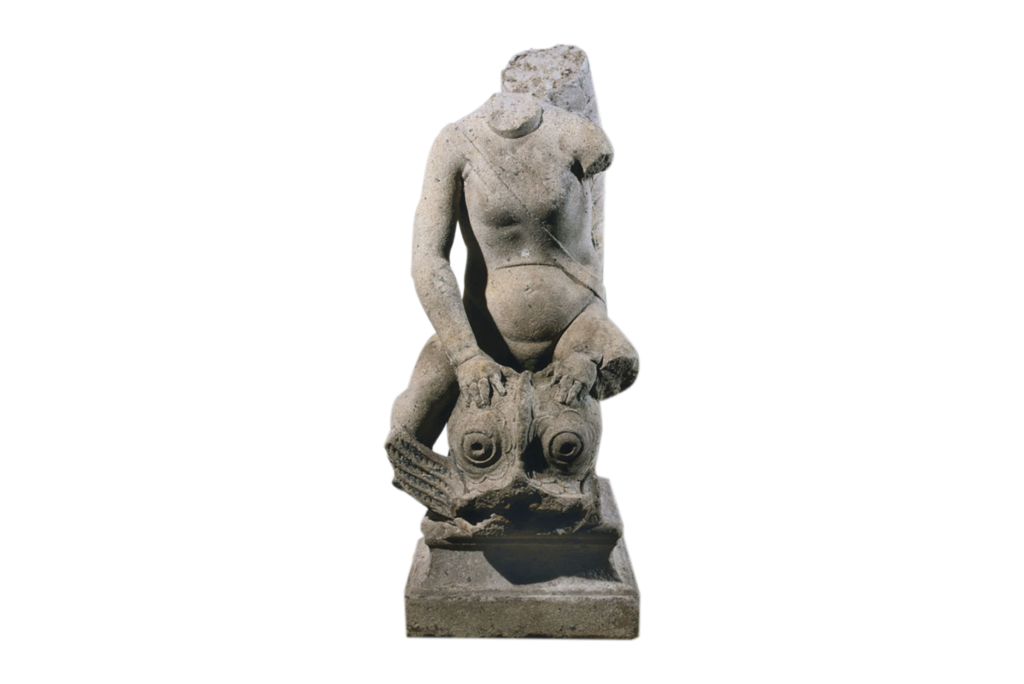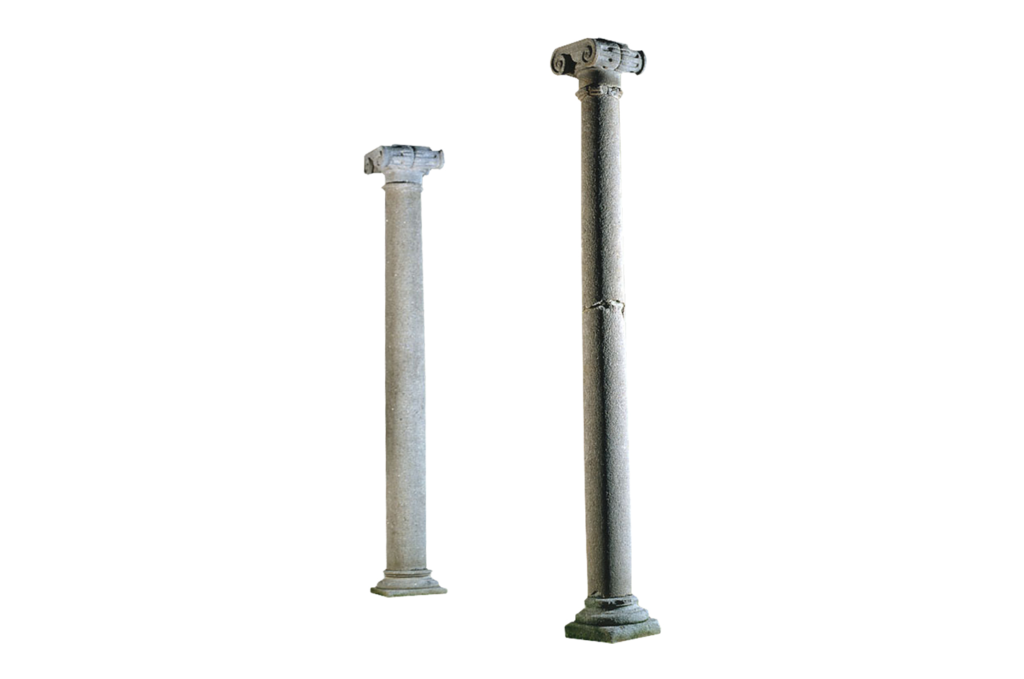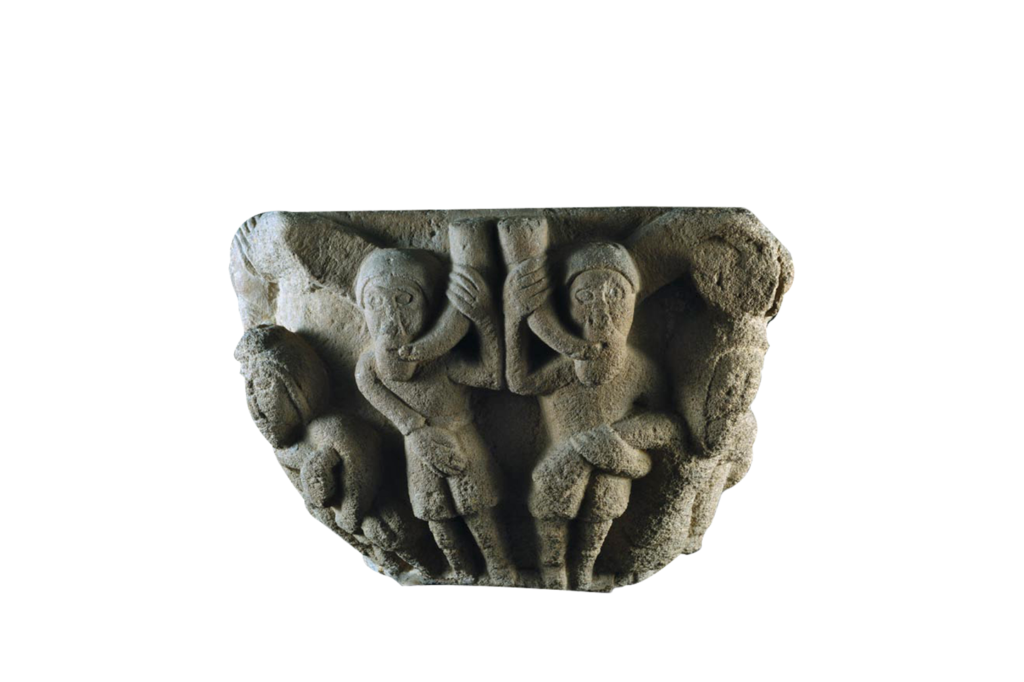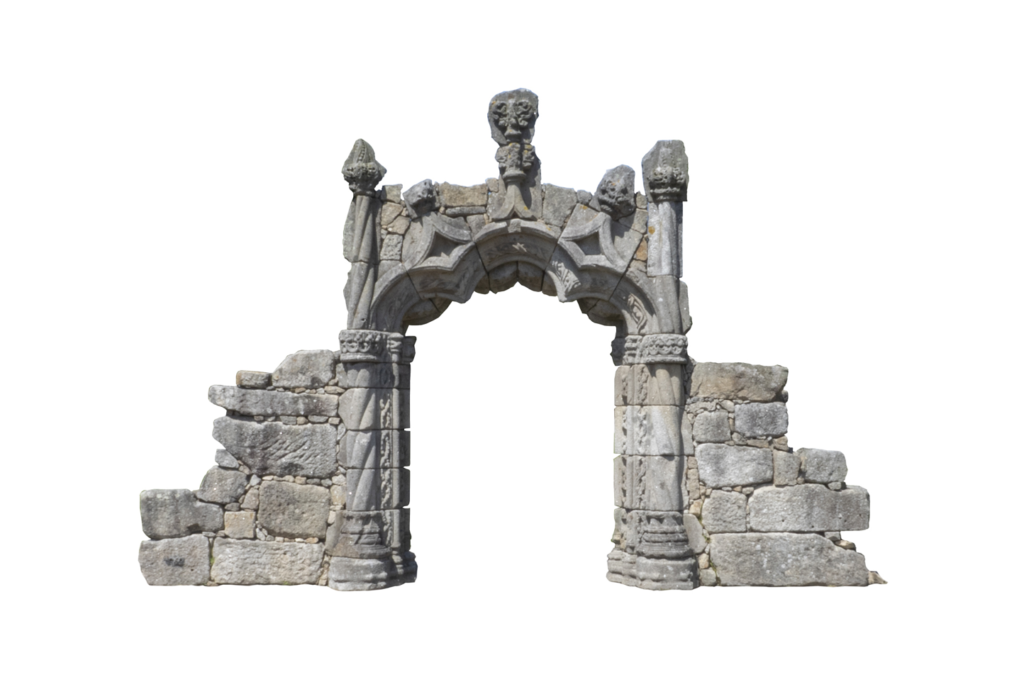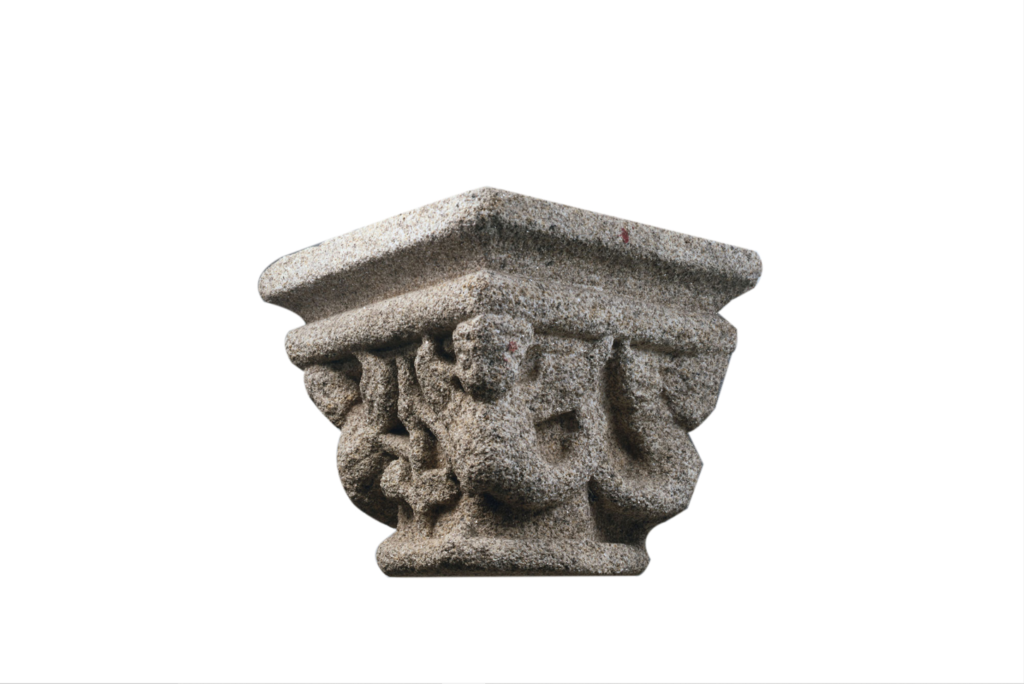
This is one of the six capitals from the arcade of the original cloister of the Convent of S. Bento de Avé-Maria, in Porto, ordered built by Manuel I, in 1518. It was built on the site formerly known as Hortas do Bispo e Cividade, next to the Fernandina wall, in the area currently covered by Rua do Loureiro, Rua da Madeira and the Praça de Almeida Garrett.
The capitals are similar in shape, but are differently decorated. This capital has the angles of the basket decorated with winged figures and its end in the shape of a fish. Alternately, on two sides of the capital, the figures interlace tails, while on the others they seem to be holding a vegetal feature. Besides the capitals, a column base and, presumably also from the original construction, a Cross of Christ and an armillary sphere are part of the Lapidary collection. These are among the few surviving pieces from when the monument was demolished in 1892 to make way for the building of the S. Bento railway station.

